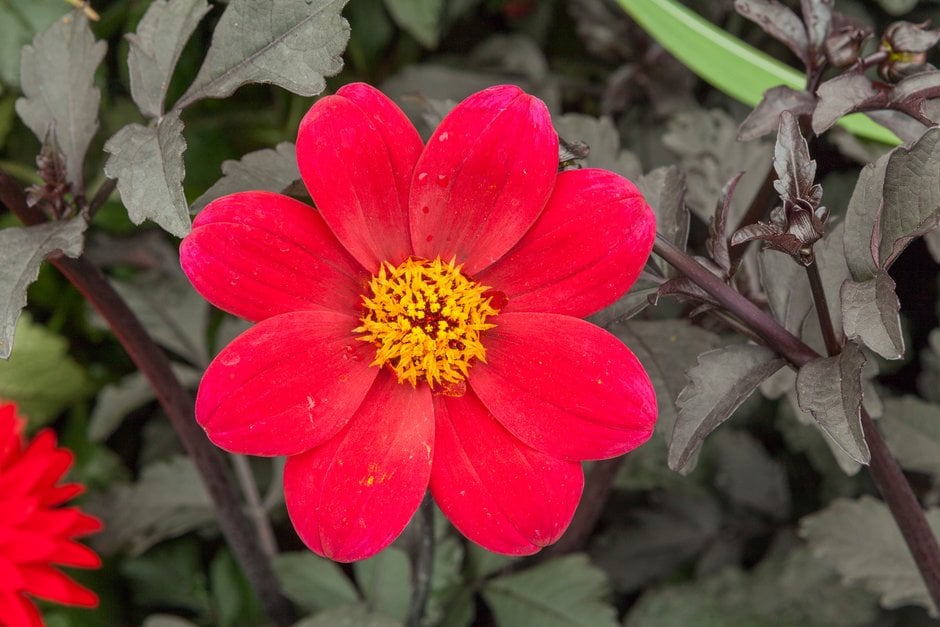Dahlia 'Mystic Wonder' (Sin)
dahlia 'Mystic Wonder'
A compact cultivar to 70cm tall with deep purple-mahogany foliage. Single flowers borne in summer and early autumn have deep red, velvet-textured petals surrounding a yellow eye

Buy this plant
Size
Ultimate height
0.5–1 metresTime to ultimate height
1–2 yearsUltimate spread
0.1–0.5 metresGrowing conditions
Moisture
Moist but well–drainedpH
Acid, Alkaline, NeutralColour & scent
| Stem | Flower | Foliage | Fruit | |
| Spring | ||||
|---|---|---|---|---|
| Summer | Red Yellow | Purple | ||
| Autumn | Red Yellow | Purple | ||
| Winter |
Position
- Full sun
Aspect
South–facing or East–facing or West–facing
Exposure
Sheltered Hardiness
H3Botanical details
- Family
- Asteraceae
- Native to GB / Ireland
- No
- Foliage
- Deciduous
- Habit
- Bushy
- Genus
Dahlia are tuberous rooted perennials with pinnately divided leaves and showy flowerheads, double in many cultivars, in summer and autumn
- Name status
Accepted
- Horticultural Group
- Single-flowered dahlias have flowerheads usually less than 10cm across, with one or two rows of spreading ray florets, surrounding a central boss of small tubular disc florets which are valuable for bees and butterflies
How to grow
Cultivation
Grow in fertile, humus-rich, well-drained soil, enriched with organic matter, in full sun. Water if needed in dry periods. Lift and store tubers in autumn to replant, or use as a source of cuttings, in spring. See dahlia cultivation and our video How to store dahlia tubers and care tips
Propagation
Propagate by softwood cuttings taken in spring from shoots from stored tubers, or divide the tubers ensuring each division has a viable bud
Suggested planting locations and garden types
- City and courtyard gardens
- Patio and container plants
- Wildlife gardens
- Flower borders and beds
Pruning
Deadhead to prolong flowering. Cut back to near ground level in the autumn, before lifting and storing for the winter or mulching in milder locations
Pests
May be susceptible to aphids, capsid bug, earwigs, caterpillars and glasshouse red spider mite
Diseases
May be susceptible to a virus, tubers may rot in store
Get involved
The RHS is the UK’s gardening charity, helping people and plants to grow - nurturing a healthier, happier world, one person and one plant at a time.